Bhutan Cross Country Cultural and Photography Tour
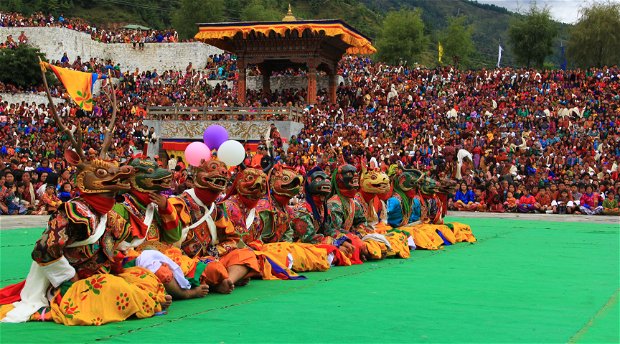
The most exhaustive cross country Bhutan tour focused on photography
This tour is focused more on photography of people, rural Bhutan, beautiful landscape, bird watching, with organized community festival and private get together party with rural folks.
What to expect Bhutan Cross Country Photography Tour
Bhutan is located in the interior Himalayas with high rise Himalayan Mountain ranges, numerous snow capped mountains, fairy tale like scenery and breath taking landscape. Show your photography skills by capturing the rich bio diversity of Bhutan, numerous Himalayan birds, intricate architecture, and happy smiling Bhutanese people. This and much more as you traverse from one valley to another with ample opportunity and subjects of photography every second of the way. Additionally Bhutan is proud to present more than 700 species of birds and more than 50 species of the Rhododendron flowers.
Special Attentions:
- Private community Festival organized by the company
- Private get together party in the traditional way where all the villagers will gather to offer you welcome and departure local drinks, food and dance as per the Bhutanese custom
- Visit to antique houses in villages and photograph the medieval way of life still practiced in Bhutan
- Photography in some temples is not allowed; and for portraits always ask their permission first. While Bhutanese people in general like being photographed but always be respectful
Bhutan Cross Country Photography Tour - Other Highlights
- Included quality wining and dining: a welcome reception with drinks at every hotels of your stay,
- Welcoming Dinner by the founders of Bhutan Swallowtail Tours and Travels,
- Throughout your holiday to Bhutan, escorted by one of the Bhutan Swallowtail’s expert tour guide- your ‘travelling concierge’, expert guide, consummate facilitator and friend in a foreign land who ensures your journey is as enjoyable as possible.
- Baggage handling everywhere on your tour.
- Free Wi-fi and Internet in most of the hotel rooms and lobbies.
- Enjoy the unique comfort of Bhutan Swallowtail’s Luxury air conditioned SUV and coach with extended leg room.
- Airport Transfers as per the scheduled flights.
Bhutan Cross Country Photography Tour - Package Inclusion:
- Airport Transfers
- Stay in hotels/Farm-stays as indicated in the itinerary
- All three meals, tea and coffee
- Dedicated SUV vehicle with a driver
- English Speaking Guide throughout the Trip
- Short hikes, Packed lunches and snacks wherever required
- Monumental Fees
- Bhutan Tourism Development Fee
- VISA processing Fee
Package Does Not Include:
- International/Domestic Air fare
- Refreshments and bottled drinks and alcohol
- Tips/gratuities
- Cost arising out of Flight Cancellation/road blockades/ landslides and events beyond our control
- Expenses of personal nature and any other expenses not mentioned in the above cost
Transport
The vehicles of Bhutan Swallowtail are all luxurious and air conditioned catering to the comforts of our guests as well as ensuring a smooth ride over the mountainous and winding roads of Bhutan. With high ride quality and extended legroom you can enjoy the beautiful landscape from the inside of our cars. We have Toyota SUVs, Hi Ace buses and coaster buses with carrying capacity of up to 30 people in one bus. Driven by experienced and licensed drivers we will make sure you enjoy your holiday to Bhutan and the comforts of our luxurious fleet of cars.
VISA to Bhutan
All tourists must obtain a visa clearance prior to travel to Bhutan. Visas are processed through an online system by us as your licensed Bhutanese tour operator.
You are required to send the photo-page of your passport and the your visa will be processed by the Tourism Council of Bhutan (TCB) once the full payment of your holiday (including a USD $40 visa fee) has been wire transferred and received in the TCB bank account. Once received the visa clearance will be processed within 72 working hours.
At your point of entry you will be required to show your visa clearance letter, the visa will then be stamped into your passport.
Terms and Conditions:
Tour prices and dates are correct at the time of the website going live, however are subject to confirmation at the time of booking. All tour information is correct at time of tours going live, however is subject to change, please confirm all details at time of booking. For full terms and conditions, please refer to our Booking Conditions page.
Gallery
Detailed Itinerary
Day 1 – Welcome to Bhutan - the land of Thunder Dragon
On arrival at the Paro International Airport you will be welcomed by your tour guide and driver. Check into your hotel and after a brief orientation from your Guide and your tour leader, start your magical experience of Photography by first visiting the following places:
- Rinpung Dzong/Fortress of Heaped Jewels, a fine example of the ostentatious Bhutanese art and architecture. The Dzong is located in the heart of the town and a few minutes walk through Nyimazam, one of the few last remaining traditional cantilever bridges in Bhutan. Dzongs serve as both monastic institutions and district administrative offices.
- National Museum Located above the Dzong is the National Museum that houses various antiques and artifacts of Bhutan and provides a glimpse into Bhutan’s cultural and religious history.
- Dungtse Lhakhang/temple Visit the 3 storied Dungtse Lhakhang/temple, built in the mid 1430’s by Thangtong Gyalpo, an iron bridge builder, to subdue a demon and the temple is firmly chained to the ground. The three floors of the temple represent hell, heaven and earth and houses some of the finest murals in Bhutan.
Overnight at your hotel in Paro.
Day 2 – Hike to Tiger’s Nest/Taktsang Monastery – the most important cultural Icon of Bhutan
Pre Dawn hike (3 hours uphill and 2 hours down) to the Tiger’s Nest with your guide and driver assisting to carry your photo gears. Breakfast at the classic viewpoint overlooking the Monastery. It’s the iconic landmark in Buddhist religion as its sacred and a pleasure to photograph it as the three storied multi buildings clings itself on the vertical cliff overlooking the valley.
Photography is suggested at:
- On the way up
- At the lunch point
- At the spot nearest and overlooking the monastery
In the evening drive to the town, visit the clock tower square and the children’s park and photograph the people and children as they relax and play around. Towards dusk drive for a few minutes to the View Point from where you can have excellent shots of the well-lit Dzong, Museum and the Cantilever bridge.
Day 3 – Thimphu – the capital city of Bhutan
After Breakfast drive to Thimphu. Today is a day for shooting:
- City-scape of Thimphu,
- Landscape of Thimphu Valley
- Bhutanese people at the vegetable market selling fresh and organic fruits and vegetables
Thimphu is the capital city of Bhutan and is one of the last few capital cities without traffic lights and the traffic still managed by traffic policemen. Thimphu is the most populated city with about a little more than 100,000 people and truly a combination of the ancient and the modern. While strictly maintaining the traditional style of architecture in modern building, there are also very old temples and numerous monasteries in and around the city, and few discotheques and Karaoke.
Soak in the panoramic view of the Thimphu valley from the site of the gigantic Lord Buddha, a 169 ft bronze Shakyamuni Buddha statue gilded in gold
The Memorial Chorten/stupa is a great place to photograph the charming elderly people, with their rosary and prayer wheel in their hand, it is another favorite with the tourists and a regular sight for congregation of devout Buddhists circumambulating the Chorten from dawn till dusk.
Visit the Simply Bhutan Museum which is a living studio showcasing the age old culture and traditional heritage of Bhutan. The restaurant here offers authentic delicious Bhutanese cuisine, if you are interested ask your guide to arrange your lunch.
If you want to shoot some good pictures of fresh and organic vegetables and fruits the Centenary Farmers Market is the place to be. You could even stock up on your organic fruits for the coming days.
Visit the Jungshi handmade paper Factory, where you get to photograph the process of making traditional handmade paper.
Check in the hotel after a brief rest you can head towards the city view point to shoot the lights of Thimphu city followed by a dinner in a local restaurant. Overnight at your hotel in Thimphu.
Day 4 – Punakha and Wangdue – Start of the rural tour of Bhutan
After breakfast check out of your hotel and drive for about three hours to Wangdue and Punakha valleys. Today’s photography would circle around:
- Mountain Passes and snowcapped Himalayan ranges
- 108 stupas at the Dochula Pass
- Beautiful village and rice field at Lobesa
- Surprising objects, phallic paintings and weird stories at the Temple of Fertility in Wangduephodrang
- Bhutan’s most beautiful Punakha Fortress
Enroute your drive from Thimphu stop over at the Dochulaa Pass (3150 meters) for breathtaking shots of the mighty Snow Capped Himalayan ranges on a clear day. The 108 small stupas built over a small hill is also a beautiful sight. The road from the Pass winds down to the warm and fertile valleys of Punakha and Wangdue valleys.
Visits the Fertility Temple / Chime Lhakhang- It is a pleasant 30 minutes walk through mustard and paddy fields. Standing on a picturesque hilltop the Lhakhang is famous for its fertility wish grants to couples. Inside the walls of the Lhakhang are beautiful frescoes depicting the colorful life of Lama Drukpa Kuenley, the Divine Madman regarded for his crazy methods of teaching which included blessing women in the form of copulation!
After lunch drive towards the most beautiful Dzong in Bhutan, Punakha Dzong meaning the Fortress of Great Bliss was built by in 1637 by Zhabdrung Ngawang Namgyel (the first spiritual & political leader of Bhutan) to commemorate the final victory against numerous Tibetan invasions. Located on a piece of land between two rivers Pho Chhu and Mo Chhu (literally meaning male and female rivers), the Dzong is massive, huge and magnificent in all its architectural grandeur. Although ravaged by flood, fire and earthquakes many times, the Dzong was always rebuilt with its original pattern and design.
The first King of modern Bhutan was crowned in Punakha Dzong. Important religious ceremonies are still held in the Dzong. The Royal Wedding ceremony on 13th October 2011 of the Fifth King Jigme Khesar Namgyel Wangchuck to Jetsun Pema was conducted in Punakha Dzong.
In the evening drive to the longest suspension bridge adorned with colorful prayer flags and is still used by the villagers to get from one village to the other. Overnight at your hotel in Punakha.
Day 5 – Punakha - Phobjikha Valleys – the open beautiful glacial valley of Bhutan
Get your camera ready to shoot:
- Glacial valleys of Phobjikha and Gangtey
- Typical Bhutanese villages with houses built and painted in rich age old traditional art and architecture,
- If its between November to February, capture the majestic Black Necked Cranes dancing in the open valley of Phobjikha
Today you drive for about 3 hours to the serene, beautiful and remote valleys of Gangtey and Phobjika. Gangtey, Phobjika and the surrounding villages are located in one of the most beautiful glacial valleys of Bhutan and a favorite with tourists. The valleys are also home to the endangered and graceful Black Necked Cranes in the winter and you can see them in the marshes in the middle of the valley. In the summer the cranes fly to Tibet.
On the way visit a Community School in Bjena Geog.
Visit the Gangtey Monastery located atop a hill overlooking the valley. Gangtey Goemba is an important Monastery of the Nyingmapa school of Buddhism.
Hike through the serene Gangtey Nature Trail for about an hour.
Excursion of Gangtey, Phobjika and neighbouring villages, stroll through the valley and visit few traditional houses. Overnight at your farm stay or hotel in Gangtey.
Day 6 - Drive from Gangtey Goemba to Trongsa – Central Bhutan
Today is to shoot:
- The beautiful landscape of central Bhutan with high mountains, lush green unexplored vegetation
- Shoot awesome landscape of the spurs and low mountains from Pelela Pass (3,420m)
- The huge spectacular Trongsa Fortress is one of the striking photos of all the photographers
The 5 hours drive from Gangtey to Trongsa valley is scenic via the Pelela Pass at 3,420 meters and across quaint little highland villages of Sephu, Rukubjee, Chendebjee, Tangsibjee and many other small rural settlements along the way.
The 18th century Stupa of Chendebjee is said to be a copy of the Boudanath Stupa of Nepal.
At the Trongsa viewpoint, enjoy the view of the majestic Trongsa Dzong/Fortress of the Vanguard of Warriors and the neighboring villages.
Visit the spectacular Trongsa Dzong.
Stroll through the small one line of shops in the town. Overnight at your hotel in Trongsa.
Day 7 – Trongsa to Bumthang – The Spiritual Heartland of Bhutan
Visit the Royal Heritage Museum located above the Dzong. Amongst the many sacred collections, the Museum houses the Raven Crown and Padma Kathang the biography of Guru Rinpoche written by his consort Yeshey Tshogyel in the 7th Century.
From Trongsa it is about two hours drive to Bumthang via the Yotongla Pass at 3,400 meters. Enroute stop over at the Yathra Weaving Center in Chumey village where you can watch men and women weavers at their loom weaving yak and sheep wool products.
Check into your hotel, rest and relax. Then stroll through the small town and just above is the Kharchu Dratshang / Institute for Buddhist monks from for photographing the monks and the valley below. Overnight at your Homestay or hotel in Bumthang.
Day 8 - Bumthang Valley Excursion – The Spiritual Heartland of Bhutan
Bumthang abounds in stories of ghosts, local deities and demi gods consuming on or preying on humans and is still believed to be prevalent; clash of local deities for power and territory before Guru Rinpochey introduced Buddhism and through magical powers converted these evil forces into the protectorate of Buddhism. Myths and legends still linger in the minds and talks of the area even now.
Today is the opportunity to take photograph of:
- Scared monasteries
- Beautiful landscape of Bumthang
- Unique Bumthang cuisine
- Local shops and restaurant displaying yak produce and serving locally famous Puta
After a typical Bumthang breakfast, visit the Jakar Dzong/Fortress of the White Bird and walk at a leisurely pace to the four temples of Jambay Lhakhang/temple, Kurjey Lhakhang, Tamzhing and kenchosum Lhakhang. All the monasteries are ancient and with their unique history and beauty.
After lunch drive to the Mebar Tsho / Burning Lake. Legend has it that in 1475, a renowned Terton / Treasure Discoverer discovered spiritual treasures from the bottom of the lake that were hidden by Guru Rinpoche in the 8th century.
In the evening stroll through the town and have dinner at a local restaurant serving the unique Bumthang cuisine as compared to other parts of the country.
Day 9- Tang Valley Excursion
You will be immersed in capturing:
- The beautiful Tang valley with the houses scattered over open wheat and potato field,
- For a change selfie time as you enjoy your picnic lunch with your co - travellers by the gentle glacial river or at the Eco Park,
- The beauty of ancient Ugyen Choling Palace turned Museum, the amazing wooden architect still beating against time. Feel ancient as you take photographs of a bygone life of a manor.
Tang Valley is another remote and beautiful wide-open valley of Barley, Wheat and potato fields with the gentle flowing Tang Chu (River) flowing in between the villages. This river forms the Burning Lake at the end of the valley.
The Ugyen Choling Palace/Museum houses Granaries, agricultural implements, kitchen, room for making alcohol, reception rooms, bedroom, caravan and trade room, textiles, bamboo and ratan rooms, religious dances costumes and masks room, library and printing-rooms of an ancient era.
Either stay the night at the Ugyen Choling Heritage house or in the evening drive back to Bumthang.
Day 10 - Bumthang to Autsho – Journey towards the eastern Bhutan
It’s a long ride but advised to make numerous stops to take photographs of:
- Ura Village – a model village of Bhutan
- From Thrimshungla Pass (3,780 m)
- Beautiful landscape of Sengor Village from the Pass,
- Stop at Lingmithang satellite town with few houses with different characteristics
- Idle place for bird watching from Thrimshungla to Lingmithang (5hours drive through the thick tropical to subtropical vegetation)
Today you will be driving further east towards Monggar the Eastern Hub of Bhutan. Places from hereon are very rural and you will notice the glaring difference between the Western and Eastern Bhutan. It is about 7 hours drive from Bumthang to Monggar through high mountain passes and rural villages. You will be driving through Serthang La pass at 3,506m and then descend down to Ura village. Ura is a clustered settlement and you can walk through the village and visit the main temple. The drive from Ura leads up to Thrumshing La Pass at 3,780 meters – the second highest driving point in Bhutan (the first being the Chelela Pass in Paro). Continue drive through Sengor village, Namling ridge, Yonkola, Thridangbi villages till you reach the warm settlments of Lingmithang. Located by the riverside Lingmithang is very warm so you can take a breather in the hot air after your cold drive till then.
From Lingmithang drive for another hour till you reach Autsho village also located by the riverside.
An evening stroll through the single line of shops at Authso and overnight at your hotel in Autsho.
Day 11 - Day Excursion to Lhuentse – Ancestral Home of the Wangchuck Dynasty
In general, women in Lhuentse and in particular Khoma village is known for weaving the intricate Kushuthara amongst other delicate and detailed woven products.
- Visit Khoma village to see women (sometimes even men) in action weaving one of the most intricate, design packed and detailed Kushuthara, a renown and reputed kira (women’s dress) usually worn in mega festivals and occasions,
- Photography them at their loom
- Rising from below, the Lhuentse Tse Fortress
- The largest status of Guru Rimpoche in Takila, Lhuentse
Visit Khoma village, which is well known for its hand-woven textiles. These silk hand woven textiles are very beautiful and intricate in design and you will find both men and women working on their looms. Visit few of the traditional houses and interact with the villagers.
Drive to Lhuentse Fortress, a few kilometers away from the village.
Drive for another 2 hours back to Tangmachu village where a huge statue of Guru Padmasambhava overlooks the entire valley. The golden 154-ft tall statue of the patron saint of Buddhism Guru Rinpoche seated on a 38-ft high lotus-base has been only recently completed and consecrated.
Overnight stay at the farm house nearby the Statue (optional) or drive back to your hotel in Autsho.
Day 12 – Tangmachu, Lhuntse – Immersed in the community life of rural Bhutan
Today you will experience the typical Bhutanese way of treating and bidding farewell to the guest by the Bhutanese rural people.
The crowd will gather at your farm house or at one particular convenient place, in the middle of the village or in the field with some food and gift, mostly consisting of ara – locally brewed alcohol, eggs, rice and fresh fruits. Some will make the offer to the guest while others jest, dance and laugh.
Make sure you capture the moments, faces of the villagers, the hospitality of rural Bhutanese people and their life style of bidding farewell to their guests. A white scarf will be waved singing the sad sentimental farewell song until the guests is out of their sight.
Drive to Monggar by evening and rest.
Day 13 – Monggar to Drametse – Trashigang - Witness the private festival with local folks
Nothing much to see in Monggar however the walk to Yagang, a family owned monastery over looking the Monggar town and Sherubling Higher Secondary School may be worth some shots. Drive leisurely to Drametse, Monggar.
It’s another day for capturing the beautiful, quite and scattered villages of the east surrounded by rich vegetation. Monastery is located at the hilltop and the view of the surrounding mountains falling before you is worth capturing in your lenses.
On demand, a private festival will be organized here at this monastery. Few local people might join to witness the festival. Dress yourself in colorful Gho and Kira and witness the most celebrated sacred festival of the east.
In the evening drive to Trashigang and overnight at your hotel in Trashigang.
Day 14 - Trashigang to Samdrup Jongkhar
Today’s drive is a 6-7 hour drive from the temperate Himalayas to the tropical foothills of the Himalayas. You will notice the sharp change in vegetation and climate. The drive is supposed to be one of the most beautiful drive with scenic landscape and it is a well known for sighting different species of exotic birds.
Samdrup Jongkhar bordering India is also known as the gateway to eastern Bhutan holds the distinct honor of being the oldest town in Bhutan. You will come across Dewathang village which is a historical site as the Father of the First king Ugyen Wangchuk led the Bhutanese troops to battle with the British and finally signed the “Sinchula treaty” with the British in 1865 on a peace note. Overnight at your hotel in Samdrup Jongkhar. In the morning you will drive for about 3 hours to Guwahati International Airport where your guide and driver will bid farewell. We hope you had a pleasant stay with us.


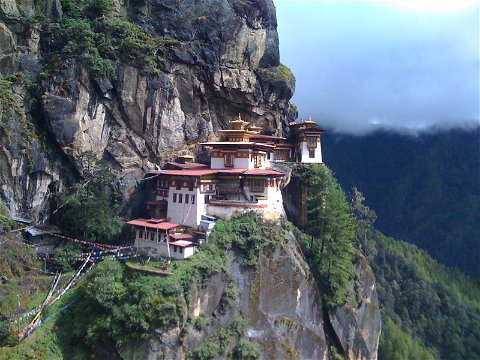
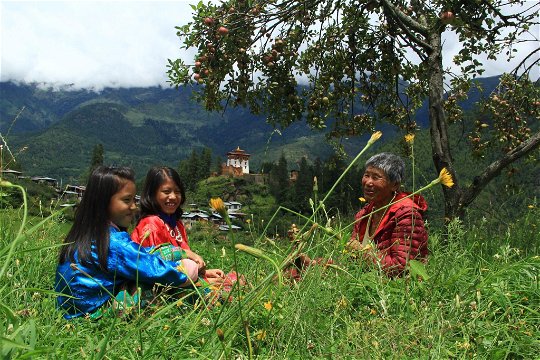

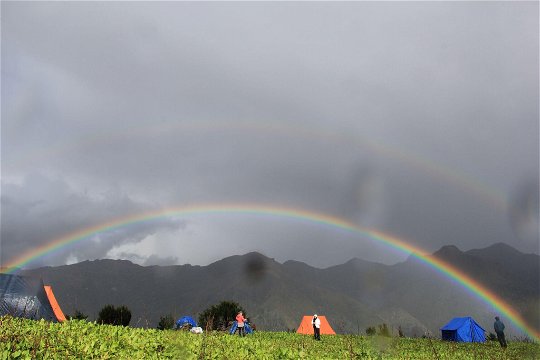
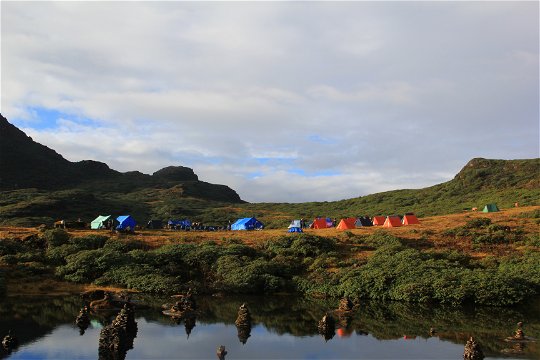

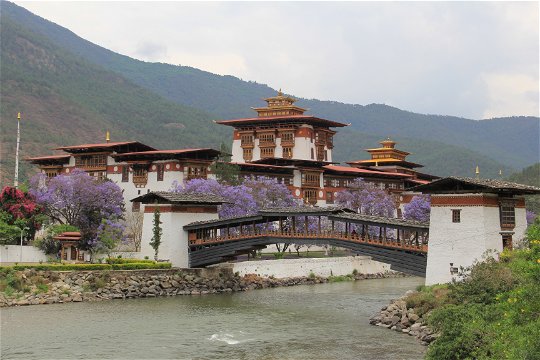
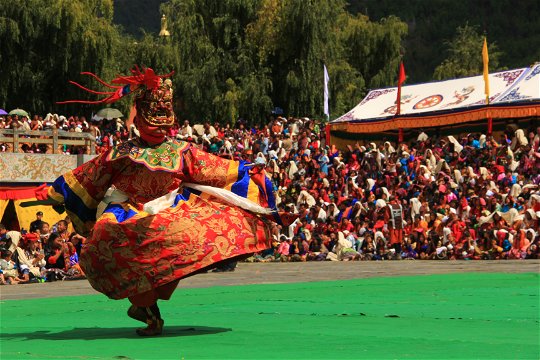


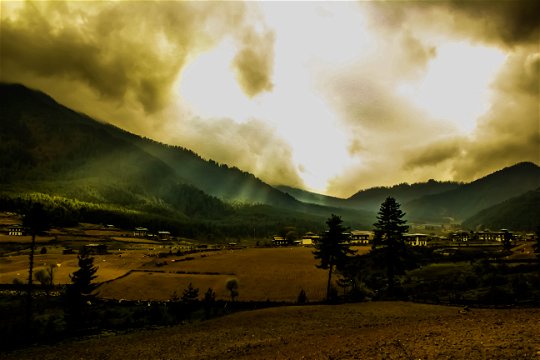


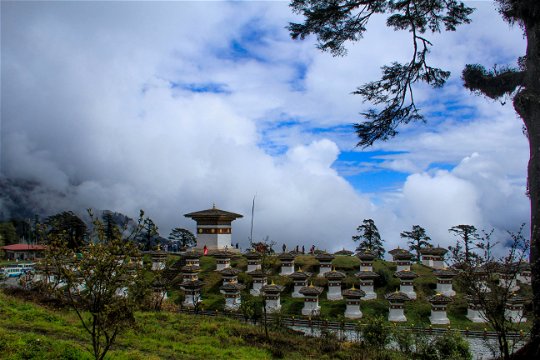

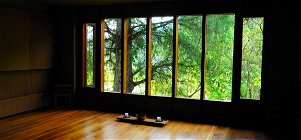
Share This Page